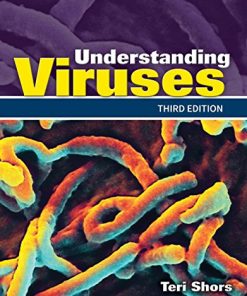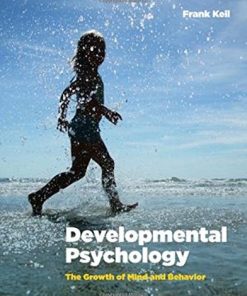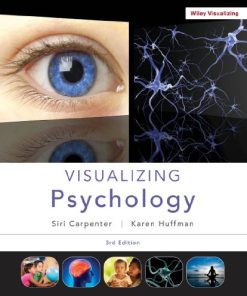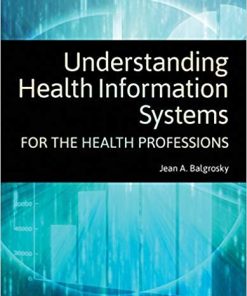Health Psychology: Understanding the Mind Body Connection 3rd Edition, (Ebook PDF)
$50.00 Original price was: $50.00.$25.00Current price is: $25.00.
Health Psychology: Understanding the Mind Body Connection 3rd Edition, (Ebook PDF) – Digital Instant Dowload.
Health Psychology: Understanding the Mind Body Connection 3rd Edition, (Ebook PDF) – Digital Instant Dowload.

Product details:
- ISBN-10 : 1506373712
- ISBN-13 : 978-1506373713
- Author: Catherine A. Sanderson
Health Psychology: Understanding the Mind-Body Connection introduces students to the story of health psychology through clear connections between the science and the real world. Using a highly accessible writing style, author Catherine A. Sanderson employs a strong emphasis on the scientific principles and processes underlying the field of health psychology to present balanced coverage of foundational research, cutting-edge research, essential theories, and real-world application. The Third Edition builds on its strong student-oriented pedagogical program, streamlines content, and includes recent studies, pop culture references, and coverage of neuroscience to support student learning and engagement. Students will enjoy reading the text because of its relevance in helping them live long and healthy lives.
Table contents:
CHAPTER 1. Introduction Understanding Health Psychology The History of Health Psychology The Development of Health Psychology The Broad Influence of Health Psychology Working in Health Psychology Summary
CHAPTER 2. Research Methods Understanding the Scientific Method Descriptive Research Methods Experimental Research Methods Epidemiological Research Methods Evaluating Research Methods Understanding Research Ethics Summary
CHAPTER 3. Theories of Health Behavior Continuum Theories of Health Behavior Learning Theories of Health Behavior Stage Models of Health Behavior Change Creating Health Behavior Change Personalized Health-Promotion Messages Summary
CHAPTER 4. Understanding Stress Sources of Stress Measuring Stress Models of the Stress Response Physical Consequences Additional Effects of Stress Summary
CHAPTER 5. Managing Stress The Impact of Coping Styles The Power of Social Support The Influence of Religion and Spirituality The Role of Personality Strategies for Reducing Stress Summary
CHAPTER 6. Injury and Injury Prevention Understanding Injury Risk of Injury Across the Lifespan Understanding Unintentional Injury Understanding Intentional Injury Strategies for Preventing Injuries Summary
CHAPTER 7. Substance Use and Abuse Understanding Smoking Factors Contributing to Smoking Understanding Alcohol Use and Abuse Explanations for Alcohol Abuse Understanding Drug Use Strategies for Reducing Substance Abuse Summary
CHAPTER 8. Obesity and Disordered Eating Understanding Obesity Psychosocial Factors Contributing to Obesity Reducing Obesity Understanding Disordered Eating Psychosocial Factors Contributing to Disordered Eating Reducing Disordered Eating Summary
CHAPTER 9. Understanding and Managing Pain Understanding Pain The Impact of Psychosocial Factors on Pain Physical Methods of Managing Pain Psychological Methods of Managing Pain The Impact of Placebos on Pain Summary
CHAPTER 10. Understanding and Managing Chronic Illness Understanding Chronic Diseases Common Types of Chronic Disease Consequences of Chronic Disease Factors Influencing Reactions to Chronic Disease Strategies for Managing a Chronic Illness Summary
CHAPTER 11. Leading Causes of Mortality: Coronary Heart Disease and Cancer Coronary Heart Disease Psychosocial Factors Contributing to Coronary Heart Disease Strategies for Reducing the Risk of Recurring Heart Attacks Cancer Psychosocial Factors Influencing the Development of Cancer Factors Influencing Coping With Cancer Summary
CHAPTER 12. Terminal Illness and Bereavement Early Models of Death and Dying Managing a Terminal Diagnosis The Death With Dignity Movement Understanding Bereavement Coping With Bereavement Summary
CHAPTER 13. Managing Health Care Health Screening Health Care Utilization The Experience of Hospitalization Health Care Interactions Adherence Summary
CHAPTER 14. Conclusions and Future Directions Preventing Health Problems Reducing Health Care Costs Understanding the Impact of Demographic Factors on Health Improving International Health Making Ethical Medical Decisions In Conclusion
You may also like…
Biology and Microbiology
Uncategorized
Education Studies & Teaching - Education - General & Miscellaneous
The Mind-Body Connection for Educators: Intentional Movement for Wellness Kathryn Kennedy













